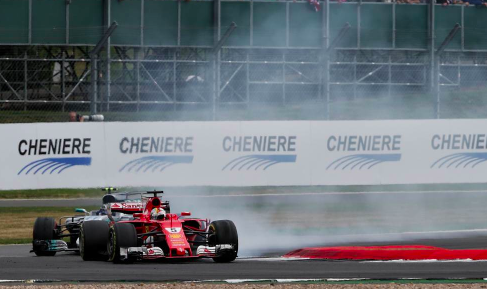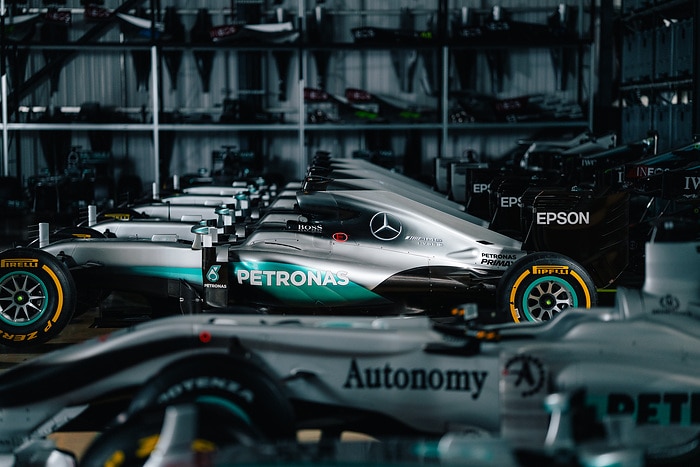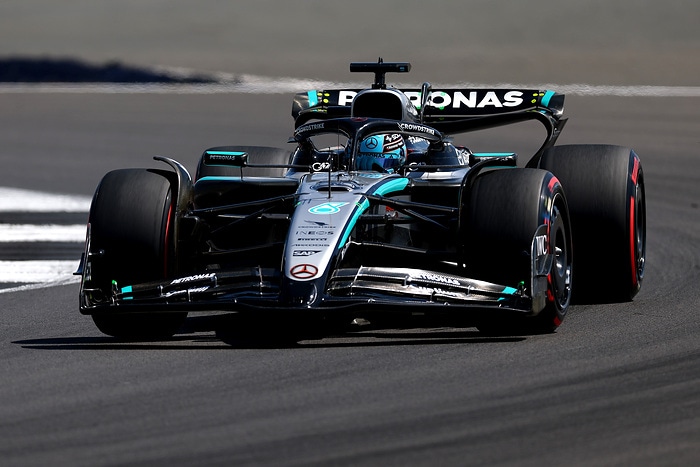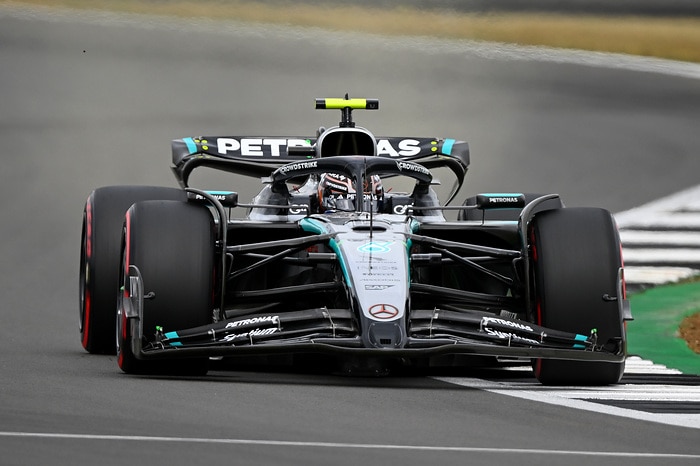
This weekend F1 returns from its summer break to race at Spa-Francorchamps and one of the hot topics is sure to be whether teams and drivers have made the right choice of tyres for the weekend or whether some might get caught out.
Pirelli has manufactured conservative tyres this season, covering their bases on the new higher downforce cars. It’s meant that the three tyre choices at most Grands Prix have been irrelevant and drivers have focussed on just the two softest available. This has also had a knock-on effect on Race Strategy, with fewer variables.
To their credit, Pirelli saw this and a few months ago decided to make some changes to the selections in the second half of the championship, starting with Spa. So the ultrasoft, supersoft and soft are the tyres on show.
When you consider that a few years ago they were bringing the hard and medium to Spa, it shows how things have evolved in the naming of the range.
But after the race in Silverstone, where Ferrari and a few other teams ran into problems at the end of stints with blistering on tyres, teams went back to their request sheets for Spa to review whether they have the right mixture of tyres for the Spa weekend.
Some haven’t.
One of the surprises at Silverstone was that the soft tyres were not as fast on race day as expected. The front tyres became the limitation, rather than the rears. Blistering appeared, which didn’t affect the lap time performance but was worrying for the teams, as it often goes down to the canvas. Spa has many similar characteristics to Silverstone, with high loadings and fast corner combinations.
So teams and drivers that have not been conservative, but rather have gone heavy on the ultrasofts and supersofts for Spa, will be going into the weekend’s practice running and race somewhat nervously; have they kept their options open with enough soft tyres?
This is the chart Pirelli has issued with the choices for each team at Spa (click to enlarge)
Ferrari had a tyre problem on Vettel’s car at Spa when trying to run a long stint in 2015 and so have been quite prudent, with three sets of softs for both drivers, the same as Bottas and the Force Indias, although Bottas has an extra set of supersofts compared to Ferrari.
Lewis Hamilton has gone conservative with four sets of softs, showing Mercedes hedging their bets across the two cars, which is probably wise given how things panned out at Silverstone and how they have historically panned out at Spa.
Last year at Spa, Mercedes went into the race with a soft-medium-medium strategy planned for the winner Nico Rosberg, which roughly equates to two sets of softs for stints 2 and 3 this year, but the top teams may try to qualify on the supersoft in Q2 for better range in the opening stint if the ultra looks to be too short-lived.
A safety car and then a red flag stoppage neutralised the strategies last year.
The standout from the chart above is Red Bull and Williams, which have been very aggressive and gone for only one set of soft tyres for the whole weekend, while Red Bull has only three sets of supersofts, compared to Williams five.
This is a decision they may come to regret if the two softer tyre compounds start to blister.
Now Daniel Ricciardo has shown on many occasions that he is a master at extending a stint and keeping the tyres alive. He got an excellent podium at Silverstone after a difficult qualifying session, by doing 32 laps on a set of supersoft tyres in the opening stint, which gave him a 10 lap tyre offset to many of the cars against whom he was racing and he was able to pass.
But he’s going to need all his superpowers at Spa with little margin for error if it turns out that having two sets of softs on race day is the way to go. And Max Verstappen, his team mate, who is harder on tyres than Ricciardo, will certainly have to be very smart about how he works his way through his nine sets of ultrasofts and three sets of supersofts.
As a benchmark, Mercedes don’t usually get it too far wrong on tyre selection, so to have such a huge variation in decision making between them and Red Bull is really unusual and gives a real added interest for the weekend.
The time needed for a stop at Spa is average at around 21 seconds. Although it’s a long pit lane, with a slow exit, the cars staying on the track must navigate a slow hairpin so the lost time from pitting isn’t as great as it might be.
Spa is a circuit that should suit the Mercedes long wheel base car, as Silverstone did, with plenty of long fast and medium speed corners, so Ferrari will be the hunters this weekend.
It is also a very tough circuit on engines; it is the highest engine power factor circuit on the F1 calendar. The track is 70% full throttle and the run from La Source hairpin to the braking point for Les Combes features 23.5 seconds of constant full throttle. It is normal to fit a new power unit for this weekend if possible in the duty cycle, as Monza next up is another extremely tough circuit for the engines.
The Belgian Grand Prix in Numbers
The 73rd Belgian GP will be the 50th to be held at Spa-Francorchamps, joining Monza, Monaco and Silverstone in the 50’s club.
Spa is also the longest circuit on the calendar at 7.004 kilometres, 1.001km more than Baku, but last year the top three in Q3 were separated by just 0.166 seconds, and the top 20 in Q1 by 1.333s showing that a 7km lap can be close.
Nobody has ever won the race from fourth in the 49 Belgian GPs run. Furthermore, since 2000, only Michael Schumacher and Fernando Alonso have stood on the podium from fourth place, in 2000 and 2005, respectively.
Alonso gave Ferrari their last podium finish in the Belgian GP, finishing second in 2013. In the hybrid era, Williams and Lotus have had as many podiums at Spa as Ferrari.
As mentioned above, Ferrari will be the hunters at this GP and Vettel will be aware that there have been no back-to-back race-winners so far this season.
Mercedes will be equally aware that Hamilton can equal Michael Schumacher’s record of 68 career pole-positions and a Mercedes front-row lockout will be their 50th in F1 with 150 front row starts under its belt. The outfit seeks a fifth consecutive pole here in Belgium.
Of course, Vettel has had more wins this season, with four, than his last three wins in the previous three years combined, showing Ferrari’s evident change of momentum.
Raikkonen starts in the top four, it will be the 100th top four start of his career. The Finn has four Belgian GP wins, twice as many as at any other track in his career and he trails – equal with Jim Clark – only Ayrton Senna (five) and Schumacher (six) in Spa wins.
Hamilton, on the other hand, has retired here four times: more than at any other circuit in his F1 career. This will be his 200th GP start and he’s looking for his fifth win of the season.
Mercedes counterpart Bottas has scored more points (106) in the last six GPs than any other driver and has finished on the podium for the last five races. That’s the best streak of his career. With another this weekend he will reach nine podiums this year, matching the total from the rest of his combined career.
Red Bull will be looking for something here in their 200th start with a Renault engine, and Ricciardo will be looking to add to his 2014 Belgian GP win. Verstappen’s five retirements in 2017 are only matched by McLaren’s Alonso (not including the Russian GP when he didn’t start).
Verstappen has managed to out-qualify Ricciardo six times in the last seven GPs.
Alonso himself suffered a 50-place grid penalty here in 2015, and a 65-place penalty in 2016 but he finished sixth in Hungary and set the fastest lap for the second time since rejoining McLaren, in the 200th GP since he was crowned world champion.
McLaren team-mate Stoffel Vandoorne could be the first Belgian to score in his home GP since Thierry Boutsen in 1989.
Toro Rosso’s Daniil Kvyat will be looking to finish on the lead lap for the first time this season while Haas’ Kevin Magnussen will be looking to reach Q3 for the first time this season – as will the Sauber pair.
However, Marcus Ericsson managed to set the 10th fastest (raced) lap times in Bahrain, Spain, Britain and Hungary.
Finally, Felipe Massa’s absence at Hungary made it the first race without a Brazilian driver since the San Marino GP in 1982 (affected by a boycott); his illness in Hungary made that the first race without any former team-mate of Michael Schumacher present since the US GP at Watkins Glen in 1978.
Have your say on JA on F1’s Belgian Grand Prix preview in the comment section below, or on our Facebook Page.
Source :https://www.jamesallenonf1.com





























